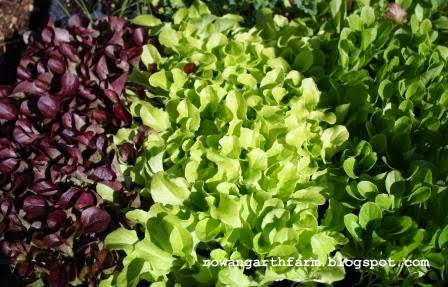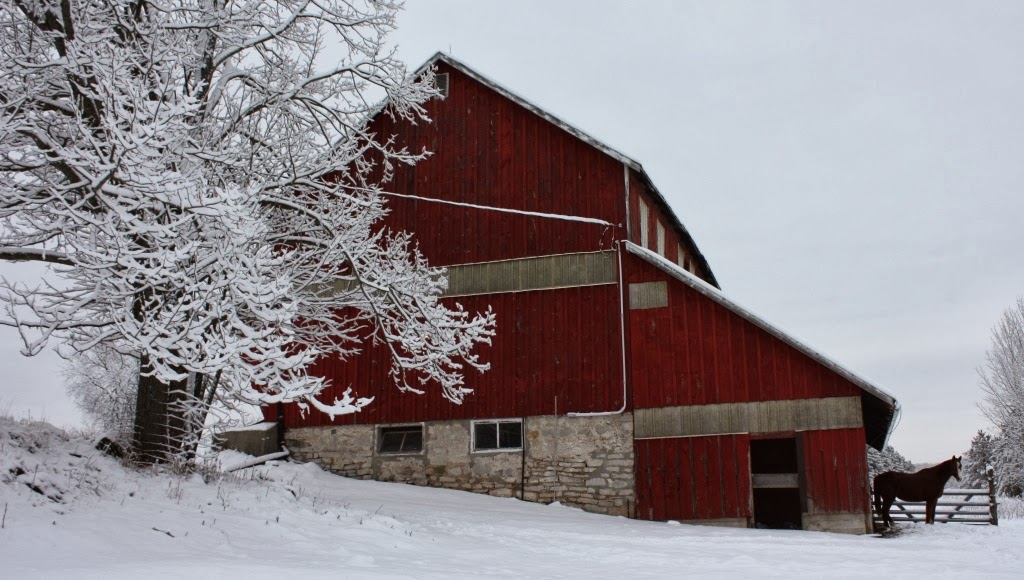After passing four days in the company of beeswax candles and our generator, we got our power back. When one of the forestry workers from the hydro company came to our door late on Saturday with the news, I almost jumped up and kissed his weary cheek. (As he was leaving he said to Lucas that he always liked working in rural areas. When folks say, 'thank you' they really mean it!)
After that first storm (and subsequent power outage)
in late April, this one seemed like a bad case of deja vu, just worse. Not only did our house grow quiet and dark, but our phone went down and then our well pump, albeit only for one morning. Not to mention that our truck had broken down earlier in the week.
We lost one of two beautiful basswoods; the larger one, which once stood like a sentry outside our barn.

As we first discovered the downed tree in the darkness, we had no idea how bad the damage was.

I'd say this is a textbook definition of a "close call."

The goats made the most of it, bellying up to the basswood buffet:


A maple that once stood in the corner of the kitchen garden was sheared almost in two, taking with it a few beautiful blooming honey locusts, as well as a whole corner section of fencing.

The outhouse didn't fare too well either, nor did a section of the roof on our driveshed.

We lost several trees on the perimeter of the hayfield and the woods look like Mother Nature threw one hell of a temper tantrum.

Dozens of trees were stripped of their boughs like a banana is peeled of its skin.

Despite the chaos and disorder, I've learned much from this latest storm, besides what foods to have in stock and how many gas cans to keep filled.
Many of these lessons I "knew" before, but it's always good to be reminded:
• Life is messy. No matter how much I try to control, prevent and avoid, stuff happens.
• It doesn't stop happening: Just because we had a bad storm last month (literally or figuratively), that doesn't excuse us from having another one this month, or the next.
• We're not "owed" any breaks and Mother Nature doesn't play by our rules, grant us our wishes or fulfill our needs. We can choose to resist or accept this -- go with the current or press upstream -- but regardless it doesn't make any difference; the river will continue to flow.
• Whatever happens isn't good or bad -- it just
is. It's easy (
really easy) for me to despair and stress and create all sorts of grief and anguish for myself and my family, but really, what good does that do?
• I can choose to focus on the loss or I can be grateful for the gains. Yes, it's challenging to be out of power and continue to function (work especially) but we're lucky to have a generator and I do love experiencing the night by the glow of candlelight. Sure, it's sad our favourite barnyard tree fell, but perhaps it'll give space for its twin to flourish. While the woods look like a battlefield, the great trees that fell have made room for the saplings to stretch their branches and grow. And while it's a huge amount of effort in an already time-strapped life to gather, cut and stack all these downed trees, it's good work that makes our bodies strong and the wood will provide heat for our family this winter. And the fencing that came down? We were looking to move that anyway. (I'm still looking for the silver lining on the driveshed roof...)
• As long as my family is safe, nothing else matters. Nothing.
Earlier this week, my yoga teacher said that living a joyful life means "doing what you love, and loving what you do." That doesn't mean life always goes according to plan or that I can always do the things that make my heart sing, but it does mean appreciating the good in that which I must do.
Translation: I can focus on all the never-ending, tiring work that this sometimes messy life creates or I can choose to savour its fullness and the amazing opportunities that I am so very blessed to experience. And as any teacher will tell you, practice makes perfect.
P.S. Re: my "Down and out, again" post -- Thanks for all your well wishes, good karma and kind thoughts. I appreciate it so very much.






























































